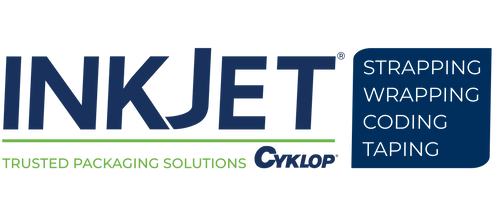13 Questions About Product Coding
13 Interesting Questions and Answers
about Product Coding
Basic Guide to Coding on Packaging
1. What Information is Printed on Packaging?
Marking and coding of manufactured products have existed since the early 1900s. Early marking was used by the manufacturers to identify high-value items by model number and serial numbers. As national and international commerce evolved and expanded, so did the need for additional information on products.
The creation of the Federal Trade Commission on September 26, 1914 , under President Franklin D. Roosevelt. Marking and coding products in the United States became a necessity under the regulations that followed. At the time the President is quoted as saying, “May this permanent home of the Federal Trade Commission stand for all time as a symbol of the purpose of the government to insist on a greater application of the golden rule to conduct the corporation and business enterprises in their relationship to the body politic.”
Information printed on products and packaging contain information for supply chain efficiencies and to meet regulatory requirements varying with industrial sectors. Quality & safety has become a major concern in recent years requiring additional information for both the consumer, government agencies, and manufacturers/packagers.
|
|
2. Who decides what has to be printed on products?
There are twelve Federal Agencies that govern requirements for marking and coding commercial products in the United States. These agencies govern more than 22 business sectors. There are regulations from (NIST) National Institute of Standards and Technology . These contain the ( UPLR) Uniform Packaging & Labeling Regulations, and (FPLA) Fair Packaging & Labeling Act.
Imported products must conform to Title 19, United States Code, Chapter 4, Section 1304 and 19 CFR 134, Country of Origin Marking regulations. Each business sector may have to comply with multiple labeling regulations and agency rules.
3. What are best before dates and expiration (expiry) dates?
Consumers are at times confused by the two different terms and marking. Refrigerated products and staples that may be stored at home often have both dates. In the United States the USDA, United States Department of Agriculture , regulates food product dating. Under the USDA Food Safety and Inspection Service there was guidance on using the following terms in labeling.
● A “Best if Used By/Before” date indicates when a product will be of best flavor or
quality. It is not a purchase or safety date.
● A “Sell-By” date tells the store how long to display the product for sale for
inventory management. It is not a safety date.
● A “Use-By” date is the last date recommended for the use of the product while at
peak quality. It is not a safety requirement except for when used on infant formula
as described below.
● A “Freeze-By” date indicates when a product should be frozen to maintain peak quality. It is not a purchase or safety date.
These dates are used by manufacturers to help consumers decide when food is of the best quality. With the exception of infant formula, dates are not required by law or pertain to the product’s safety.
4. What does canned product codes refer to?
These codes enable the tracking of products throughout the supply chain. They allow manufacturers to rotate stock or identify products for recall when necessary. Cans with food products must have the date of canning visibly marked on the can itself.
5. What is a retort process?
Retort refers the package enclosing a food product and sometimes the Autoclave for Sterilization pressure vessel used in food manufacturing. The resulting product is sterile and shelf-stable reading for shipping to distributors and stores. Canned products use color changing ink in this process to let manufacturers know the cans have gone through these processes. This helps prevent cans that have not been properly cooked from leaving the factory for stores.
6. Are barcodes required by regulations?
Bar codes or (UPC), universal product codes, are not required by regulation. Containing information pertaining to the manufacturer’s name, product, size, and the price they are easily scanned for inventory purposes. These numbers are not used for recalling products but for tracking and stock-keeping facilitation of the manufacturers and retailers. The marking often contains specific (SKU), stock keeping units, data for a particular company or retailer.
7. What is a 2D barcode?
2D or 2-dimensional barcodes are those squares that seem to contain a digital pattern of dots. These codes evolved from the basic vertical line type bar code because the can hold much more information. They are also readable at a very small size when printed or etched onto a product. Consumers can now utilize their cell phone cameras to identify the characteristics of the product and compare prices from other merchants.
8. Are codes used to protect brands from Counterfeiting?
Counterfeiting has become a huge issue for both consumers and manufacturers for all types of products from children’s toys to medicines. Tracking technologies like barcodes mentioned earlier are the first line of defense but don’t offer much resistance to serious counterfeiting. Bar codes and 2D codes can be imitated where only a special scanner and software would be able to discern the counterfeit. This isn’t practical in most retail points of sale for consumers. More complex security markings can be employed like holograms which are more difficult to copy but difficult for a consumer to recognize counterfeit. Holograms can be printed on many different types of surfaces including chocolate. Most holograms are still produced by technology that can be copied.
Another method using holograms are stickers that are difficult to remove and show visible damage when they are removed. Technology is advancing that can mark products with micro holograms with lasers and technologies that cannot be easily reproduced.
9. What kind of markings are printed on medicines to prevent counterfeiting?
Many steps have been taken with packaging and marking of medicines to prevent tampering and counterfeiting. Pharmaceutical companies often use a computer-generated encrypted 2D code on the packaging. These codes can still be variably printed on a packaging process line by specially designed printing and coding devices.
The United States Food and Drug Administration issued guidance on markings that can be detected to authenticate the drug product or dosage form back in 2011. These minute identifiers can be applied by printing using specially designed inks.
10. How do codes on gift cards work?
Gift cards and lottery tickets have variably printed security codes printed by high-speed marking/printing devices. The devices are tied to computer software that prints a variable code on each card or ticket. Each of these codes contain unique serial numbers of human or machine-readable characters. The characters can be fed or printed into POS terminals such that the cashier can assign a customer requested value to the card.
11. Do retailers have requirements of their suppliers for coding?
Walmart, Amazon, fulfillment houses and other big box retailers do have suggested specific marking and coding requirements for suppliers. They don’t necessarily enforce it with their suppliers but mandate it for their customers. Marking on multiple sides of products and cartons simplifies scanning for inventory.
12. What kind of labeling is required on cannabis products?
In general cannabis products must be properly labeled to ensure customers know what they are buying and to prevent unintended use. The FDA does regulate Cannabis and Cannabis derived products, including Cannabidiol (CBD). Cannabidiol products used in cosmetics may come under the FDA labeling requirements for those products.
The labeling required varies by state and by product use.The State of California has its own labeling requirements for cannabis products. Colorado yet different requirements for packaging and labeling . Oregon, still other regulations on the packaging and labeling.
13. Will label and marking regulations change?
Regulations will continue to change with new products, packaging, consumer security and manufacturing competitive drivers. Evolving technologies will make the process of labeling and marking products and packaging easier and more effective along with changing regulations.



